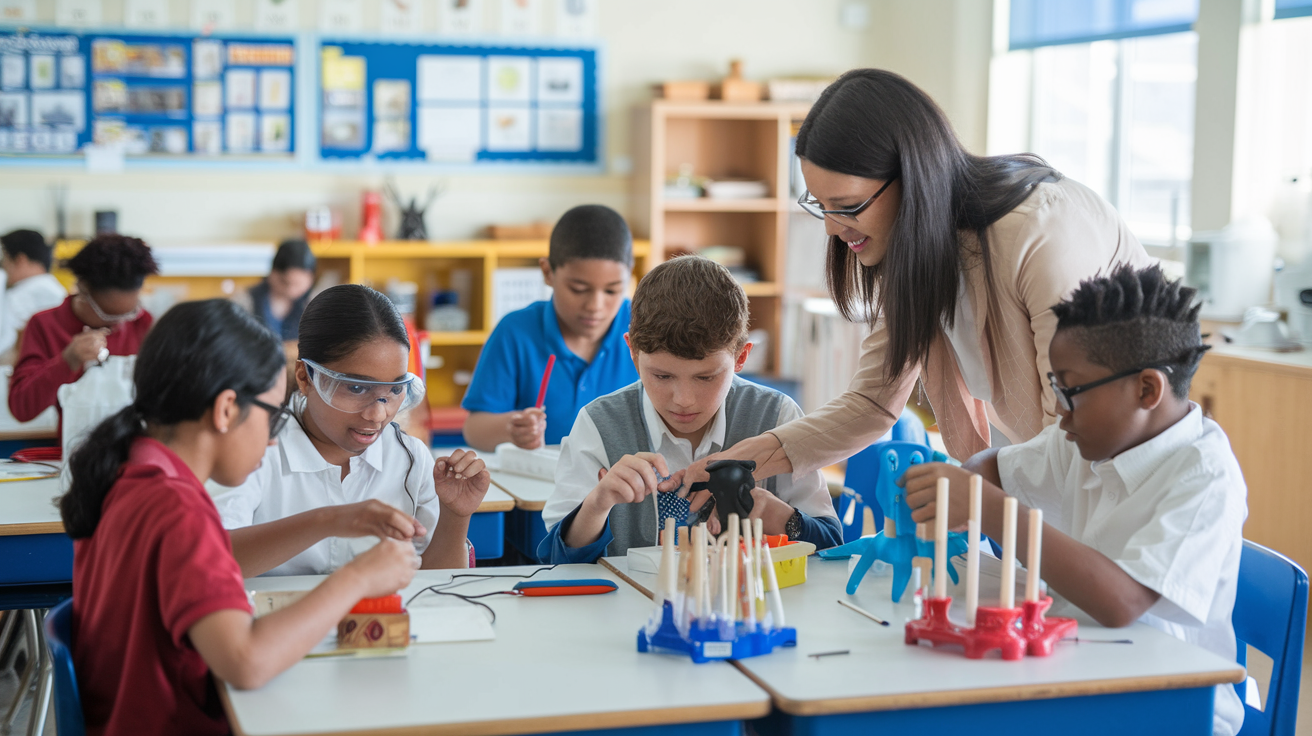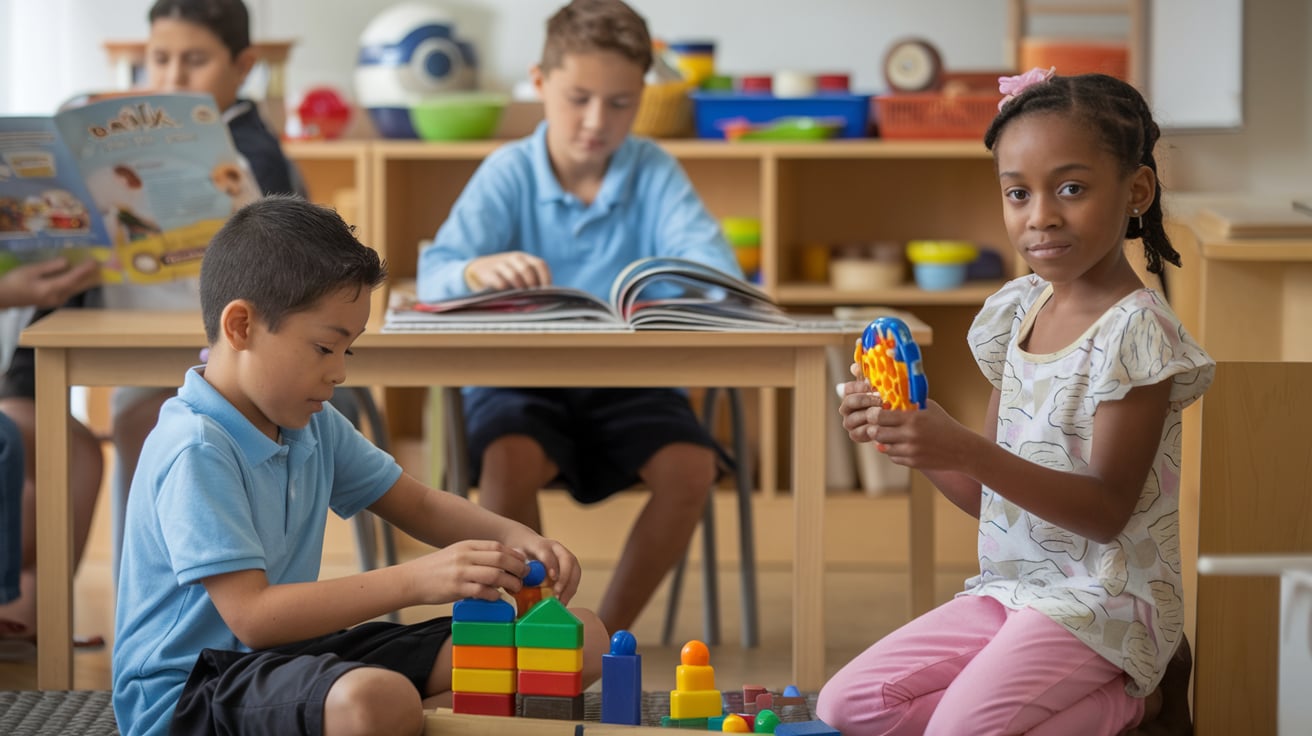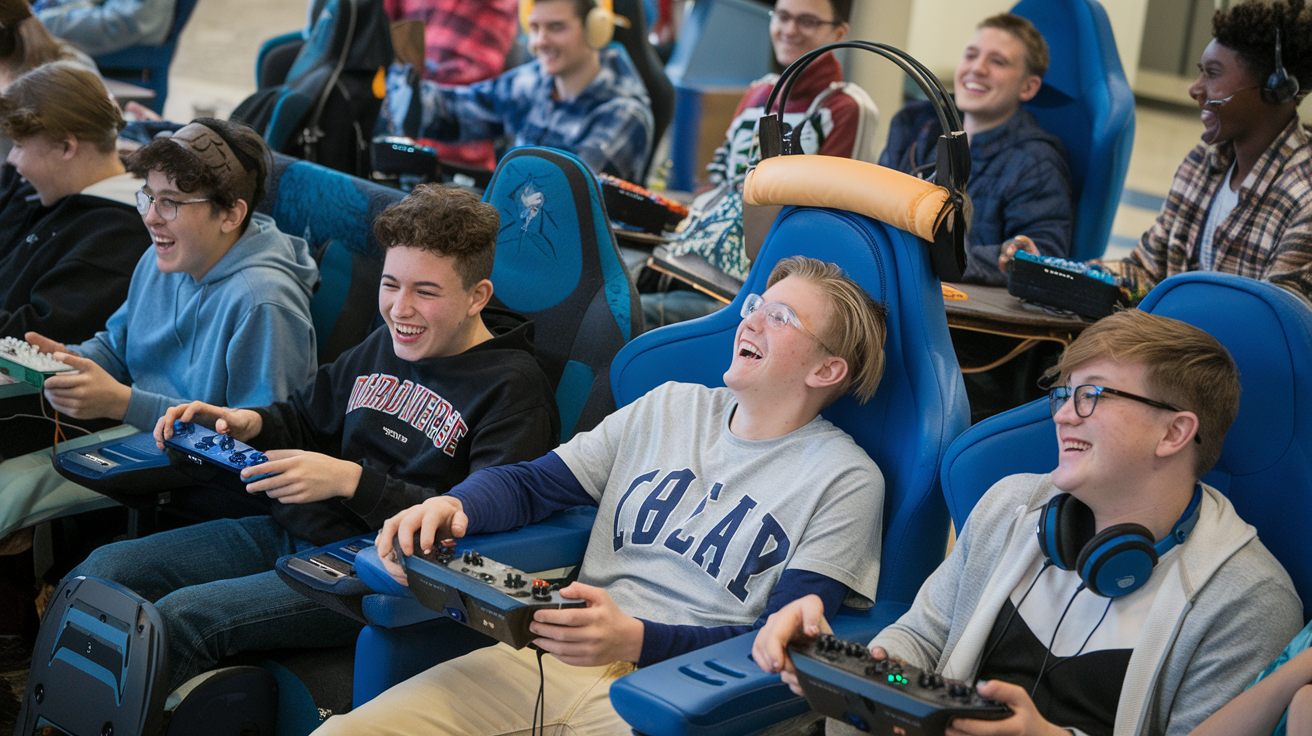When trying to help an autistic child learn more, it’s important to consider the least restrictive environment. This means knowing which classrooms will work best for your child so they can fully take part in school. As a parent of a child with autism and someone who supports inclusion, I want to share some things to consider when deciding on placements.

One of the key questions that arises when considering inclusion for autistic students is: what specific types of activities can genuinely foster an inclusive environment? As a parent who actively takes part in my child’s education, I understand inclusive activities must fulfill specific criteria in order to positively impact all students.
Adaptability is essential. Each student has their own unique way of learning, and it is rare to find two students who learn in exactly the same way. The activities need to have enough flexibility so that they can be adapted to meet the needs of learners with varying abilities. Tasks that are open-ended and have multiple access points encourage and enable participation.
As an illustration, imagine you are engaged in a science experiment, where you have the flexibility to choose from a multitude of options. These options may include observing phenomena, accurately recording data, actively taking part in hands-on investigation, or clearly explaining intricate concepts. No student is excluded because of this adaptable approach, which ensures inclusivity for all.
Activities should foster peer collaboration. Group work taps into different strengths and aptitudes, so students learn from each other. Mixing teaching strategies includes peer learning. Games, book clubs, experiential activities can all be done collaboratively to unite various skill sets.
Inclusive activities promote acceptance. Every student needs to feel valued for their unique abilities. Well-designed activities reinforce perspective-taking and appreciation for diversity. This comes from peers working interdependently in a safe environment to reach a common goal.
Supporting Autistic Students in Inclusive Classrooms
All students have the legal right to be educated with their typical peers as much as possible. Our goal is for people with disabilities, like autism, to still be part of the general curriculum and school community. But the best option is somewhere in between.
On one hand, full inclusion means students are mainly in the regular classroom with in-class aids helping. Another option is to have a special day class with other students who also get special education. At the other end, you’ve got these schools that are all about teaching life skills and behavior to kids with autism.
When checking out schools, really picture your kid doing well there. Watch how others do it and consider how it feels to you. Look at the stats on academic growth and social development. Talk to staff about their training and mindset toward inclusivity. Most importantly, trust your gut as a parent!
How to Foster Belonging Among Peers
Full inclusion is about more than just being in a regular class. To really include everyone, teachers and peers need to be open-minded and willing to learn from each other. Every child deserves to feel a sense of belonging within their school community.
We decided not to bring our son Idan to a big class with 30 students because it might overwhelm him. He has been in a communication kindergarten with only 8 students for the past three years. Going from a small class to a big one would be a sharp transition for his emotions and senses. So, instead, we sent him to a smaller communication class with 9 students. However, this class is still part of a regular public school, so all school activities are shared.

Securing the Right Supports
Autistic students could benefit from aids, therapies, or adaptations for their learning environment. Help your child get to know help so they can handle the least restrictive placement.
For my friend’s daughter, high schooler Angela, the teachers recognized in note-taking support and extra time on exams to ease anxiety. She meets regularly with the school counsellor and special education coordinator to create sensory-friendly accommodations. With these supports in place, Angela thrives in advanced classes alongside college-bound peers.
Preparing for High School Inclusion Challenges
Although academics are important, it is equally important to foster social and emotional growth through an inclusive approach. Developing relationships and conversational skills causes intentional inclusion strategies in various learning settings.
Clubs with shared interests bring people together. Schools can allocate classroom areas for various clubs, such as those centered on gaming, trains, dolls, and more. Autistic students can engage in social interaction through their preferred interests. When given a little push, clubs can facilitate the development of genuine relationships as people connect over shared interests.
Creating sensory spaces can help reduce anxiety. Creating calming environments with weighted blankets, textured pillows, soothing music, or gentle lighting can provide a sanctuary for students who are feeling overwhelmed. Quiet environments help students learn how to regulate themselves, which is crucial for active participation in the classroom. Creating sensory spaces can help all students who have difficulty regulating their emotions.
Incorporating Movement Supports Success
Many students with autism find it difficult to remain seated for long periods of time. Including physical activities enhances academic achievements and overall health and wellness.
Idan simply cannot absorb information without regular sensory breaks. His teacher, Ms. Liron has a basket of stress balls, chewy jewelry, stretch bands and more. Several times a day, they take ‘brain break’ movement intervals before resuming more seated work.
They also play lots of movement-based games. Simon Says improves following instructions while Dance Freeze Party works on inhibitions and impulse control. The key is sprinkling active games throughout lessons to maintain engagement.
An inclusive learning environment is all about meeting the needs of every student in the community. Making sure everyone feels included takes some effort, but it’s worth it. I hope more educators realize how awesome full inclusion is for all kids. When classrooms represent diversity, equity, and justice, they demonstrate the best of humanity.
Promoting Belonging Among Peers
Making sure everyone feels included goes beyond just the classroom – it means helping neurotypical peers understand and connect with those who are different. The school community should make all students feel valued, regardless of their abilities.
My another friend’s daughter took charge and started a campaign to promote autism acceptance when she saw that Oren was having a hard time making friends. Her sixth-grade class now has monthly lunches where they celebrate neurodiversity. The whole school community joined in on empathy training. This helped students build compassionate relationships with Oren, rather than judging him.

Advocating for empathy and compassion in the high school setting.
Most high school social structures are characterized by cliques and a competitive atmosphere. Autistic students may face rejection from their peers if they do not have a proper understanding.
Once students realize that judging others as strange reflects negatively on themselves, their entire mindset changes. Inclusive oriented teachers talk about the challenges that classmates with autism encounter and come up with ideas for supporting them. Compassion and allyship are the focus of small group exercises.
Afterward, students formed a weekly meetup club centered around magic, gaming and coding. These shared interests organically unified both autistic and general education teens. Core friendships emerged that lasted beyond high school.
By taking an active role in assessing placement options, you can enrich your child’s inclusive education. Keep the end goal of independence, confidence and belonging at the forefront. With some creativity and flexibility, districts can usually strike the right balance of supports for students to thrive among classmates. When this happens, it is wonderful to watch them blossom!
Fostering Independence
Although support is vital in the early grades, the ultimate objective is to foster self-reliant autistic adolescents who are ready for adulthood. To promote independence, it is necessary to gradually reduce support while giving students the freedom to guide their own learning. The success of this process largely depends on skillfully crafting and modifying the Individualized Education Program (IEP) to match individual growth objectives.
Collaborating on the IEP
The IEP of a student functions as a roadmap to determine their learning priorities annually. IEP meetings provide a chance to coordinate changes in the environment, therapies, and skill training to meet the student’s changing needs and transition plan.
When my son started elementary school, his occupational therapist worked with him to determine specific areas where he needed to improve his independence, such as organizing materials, initiating tasks more effectively, and taking better notes. The educators integrated organizational skills directly into the lessons to strengthen the IEP objectives. We also reached a consensus on gradually decreasing one-on-one assistance every quarter, as long as Idan was comfortable with it.
Checking off IEP benchmark achievements throughout the year provided Idan tangible evidence of his progress. Witnessing growing confidence in managing workload and schedules continues fueling motivation into high school.
Promoting Independence for Autistic Adolescents
When coursework and expectations become more demanding, students who lack organizational skills and emotional control are at risk of falling behind. Using daily checklists, implementing calming strategies, and breaking down large assignments into smaller tasks are all ways to support executive functioning and promote greater independence.
My friend’s daughter Angela struggled balancing long-term projects like papers and lab reports without significant anxiety. Her parents worked with the guidance counselor to break all multi-step assignments into manageable pieces on her phone calendar. Getting small victories along the way helped Angela gain perspective on accomplishing bigger goals herself.
How Self-Advocacy Prepares Students for Adulthood
What is the ultimate sign of being independent? Students communicating their own needs to teachers and peers. Effective self-advocacy involves recognizing and comprehending one’s own learning styles, strengths, and limitations. With a decrease in external support, students should take responsibility for managing their own accommodations.


